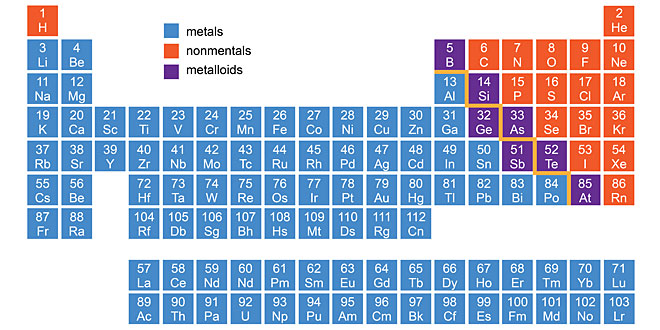Question: How can you convert saturated solution into unsaturated or vice-versa?
Answer: Saturated solution on heating becomes unsaturated and unsaturated solution on cooling becomes saturated.
Question: Why water is called universal solvent?
Answer: Water can dissolve large number of substances in it.
Question: What is Tyndall effect?
Answer: The scattering of light by colloidal particles is known as Tyndall effect.
Question: How can we separate colloidal mixtures?
Answer: By centrifugation, in a centrifuge machine the colloidal solution is kept in a test tube, rotated very fast and due to centrifugal force the colloidal particles are separated.
Question: What is emulsion?
Answer: When both the dispersed phase and dispersing medium is liquid, it is called emulsion. E.g., milk, face cream.
Question: What is aerosol?
Answer. When the solid or liquid is dispersed in a gas it is called aerosol. e.g., smoke, fog.
Question: What is the principle for separation of immiscible liquids?
Answer: The principle of separating immiscible liquids into layers depending on their densities. The less denser liquid collects at the top and more denser liquid at the bottom.
Question: What is chromatography?
Answer: Chromatography is the technique used for separation of those solutes that dissolve in the same solvent.
Question: What is distillation?
Answer: Distillation is the separation technique of two miscible liquids that boils without decomposition and have sufficient difference in their boiling points.
Question: How can you separate two liquids that have less than 25 K difference of boiling points?
Answer: To separate a mixture of two or more miscible liquids for which the difference in boiling points is less than 25 K, is fractional distillation.
Question: What is condenser?
Answer: It is an apparatus used to convert gas into liquid by cooling it.
Question: What is crystallisation?
Answer: When a saturated solution is heated and allowed to cool slowly, crystal of the solute dissolved in the saturated solution are separated from it. It is used to purify solids.
Question: State the properties of a solution.
Answer: Properties of a solution are:
- A solution is a homogeneous mixture.
- Particles of a solution are smaller than 1 nm and cannot be seen by naked eyes.
- Do not scatter beam of light.
- Solute particles cannot be separated from the mixture by the process of filtration and thus, solution is stable.
Question: State the properties of a suspension.
Answer: Properties of a suspension
- Suspension is a heterogeneous mixture having particle size greater than 100 nm.
- The particles of a suspension can be seen by naked eyes.
- Particles can scatter a beam of light.
- It is unstable.
Question: What is a colloidal solution?
Answer: It is a heterogeneous solution which appears to be homogeneous, particles size is very small and so cannot be seen with naked eyes but it is stable. E.g., milk and blood.
Question: State the properties of colloidal solution.
Answer: Properties of colloidal solution.
- It is a heterogeneous mixture having particle size between 1 nm to 100 nm.
- Size of particles is very small, cannot be seen with naked eyes.
- It scatters a beam of light.
- They are stable as the particles do not settle when left undisturbed.
Question: Give the applications of centrifugation.
Answer: Application of centrifugation are:
- Used in diagnostic laboratories for blood and urine test.
- Used in dairies and home to separate butter from cream.
- Used in a washing machines to squeeze out water from wet clothes.
Question: Give the applications of chromatography.
Answer: Applications of chromatography are
- To separate colours in a dye.
- To separate pigments from natural colours.
- To separate drugs from blood.
Question: Why is crystallisation better than evaporation?
Answer: Crystallisation is a process that separates a pure solid in the form of its crystals from a solution. Crystallisation is better than evaporation because during Evaporation
- Some solids decompose or some, like sugar may get charred on heating to dryness.
- Some impurities may remain dissolved in the solution even after filtration which on evaporation contaminates the solid.
 Class Notes NCERT Solutions for CBSE Students
Class Notes NCERT Solutions for CBSE Students





